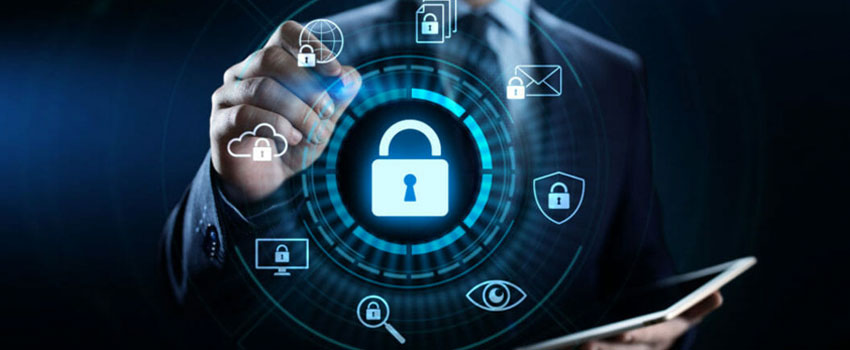Cybersecurity and Disaster Recovery – We see regular news about ransomware attacks, virus attacks, distributed denial-of-service (DDOS) attacks, a man in the middle attacks, and phishing attacks on the United States and across the world organizations. The scale of cyber-attacks is growing aggressively with every passing year. Similarly, cybersecurity efforts are also increasing and organizations are deploying more advanced security measures for enhanced protection.
Robust cybersecurity measures such as firewalls, intrusion detection systems/prevention systems (IDS/IPS), advanced network security, and similar other security operations can protect from cyber-attacks greatly, but they cannot guarantee 100% protection. The recent cyber-attacks on different organizations have shown that a small loophole in security programs or a zero-day vulnerability is enough for cybercriminals to breach through the security wall.
If an organization gets hit by a cyber threat despite a well-protected cybersecurity plan, then what is its disaster recovery strategy? You cannot just focus on cybersecurity measures and sideline disaster recovery planning. Other than cyber-attacks, an organization can also encounter malfunctions in hardware or software, face power outages, natural disasters, or similar other calamities that can cause serious damage to the critical infrastructure or cause intolerable downtime. In all such cases, a disaster recovery plan is the only way out that can ensure that business operations get back to their normal state in minimal time.
In short, you should not just allocate resources and efforts for implementing a robust cybersecurity infrastructure that reduces the chances of cyber-attacks, but you must also set up a robust disaster recovery plan to mitigate the overall damage any attack could have on your business. In this blog, we will discuss some common cybersecurity measures and then focus on how to approach towards effective disaster recovery plan.
Cybersecurity Measures
Different organizations need different cybersecurity measures depending on the scale of their business, systems networks infrastructure, sensitive information volume, and similar other factors. But the common security solutions that every organization should focus on include:
- Firewalls
- Real-time phishing emails filter
- Unauthorized access control
- Antivirus
- DDoS attack prevention
- Identification and removal of malicious software
- Security auditing or network monitoring tools
- Data encryption
- Strong password policies and multi-factor authentication
These are some of the most common cybersecurity measures all organizations that deal with unprecedented amounts of data must implement. But such practices are not just a one-time thing. You need to remain in the continuous loop of evaluating your security measures, patching your computer system, and implementing new security measures depending on the new threats that evolve with time.
Disaster Recovery Approach
Once an organization has set up proper cybersecurity measures, then it is in a better position to defend itself from cyber threats. But since there is always a possibility of security gaps, therefore the next thing you have to focus on is the disaster recovery plan.
Disaster recovery is linked with your backup practices. But before we discuss further data backup and recovery infrastructure, let’s highlight its importance with an example.
Let’s assume your organization got hit with a ransomware attack or a malicious code that locked your business-sensitive information. Now if you haven’t backed up your data before the attack, then you are left with no choice other than to pay the ransom and get back the data. But if you did have made the backup previously, then you can simply restore it back and make your business operational in minimal time. This showcases the true potential of a data backup and disaster recovery plan.
So, even if you get hit by a cyber-attack or face severe computer network malfunction, still you can stay assured that your business crucial data is recoverable. Disaster recovery in the shape of a data backup system is a must-have plan, but what are the best backup practices of today?
The initial data backup is usually taken locally in the hard disk drive (DDD), solid-state drive (SSD), CD-ROM/DVD-ROM, USB drive, network-attached storage (NAS), or similar other storage mediums. Local backups help to keep a backup copy of sensitive data on-premises, so it can be easily restored with a fast recovery speed. There are many backup software solutions that can facilitate in making automated regular local backups. But the major disadvantage with local backups is that they are also vulnerable to the same threats as original data, such as power outages, hardware malfunctions, disasters, etc. In addition, local backups are also quite costly to set up and maintain.
Since local backups have some pros and cons, that’s why the business world is now considering cloud backups as a more effective disaster recovery plan. Because in cloud backup, data is stored on remote servers of a cloud provider so there is no need of maintaining on-premises hardware. Cloud backup provides unlimited storage possibilities, easy access to data, more protection from on-premises data loss, and quick data recovery. In addition, cloud security is also well-maintained by cloud providers, and most of them encrypt the data while storing it in their server so that only you and authorized personnel have access to the data.
For an effective disaster recovery plan, the best approach is to opt for both local and cloud backups. But first, you must identify the data sources that are crucial for business continuity and back up those datasets on priority. Once you have set up a robust disaster recovery plan and conducted the initial backups, your organization is in a better position to defend against cyber-attacks and overcome the damage in case of a breach.
Wrapping Up
The world is progressing aggressively in technology and digital advancements. Remote working, machine learning, artificial intelligence, agility software developments, and similar other advancements have changed the traditional working environment of businesses. All this has also triggered more sophisticated cyber-attacks and unexpected hardware/software malfunctions. The best way to ensure business growth and continuity is to focus more on cybersecurity measures, but also be prepared for the worst-case scenarios with a robust disaster recovery plan. With cybersecurity and disaster recovery plans going hand in hand, your business cannot be breached easily.
Cybersecurity and Disaster Recovery: Why You Need the Best of Both Worlds



